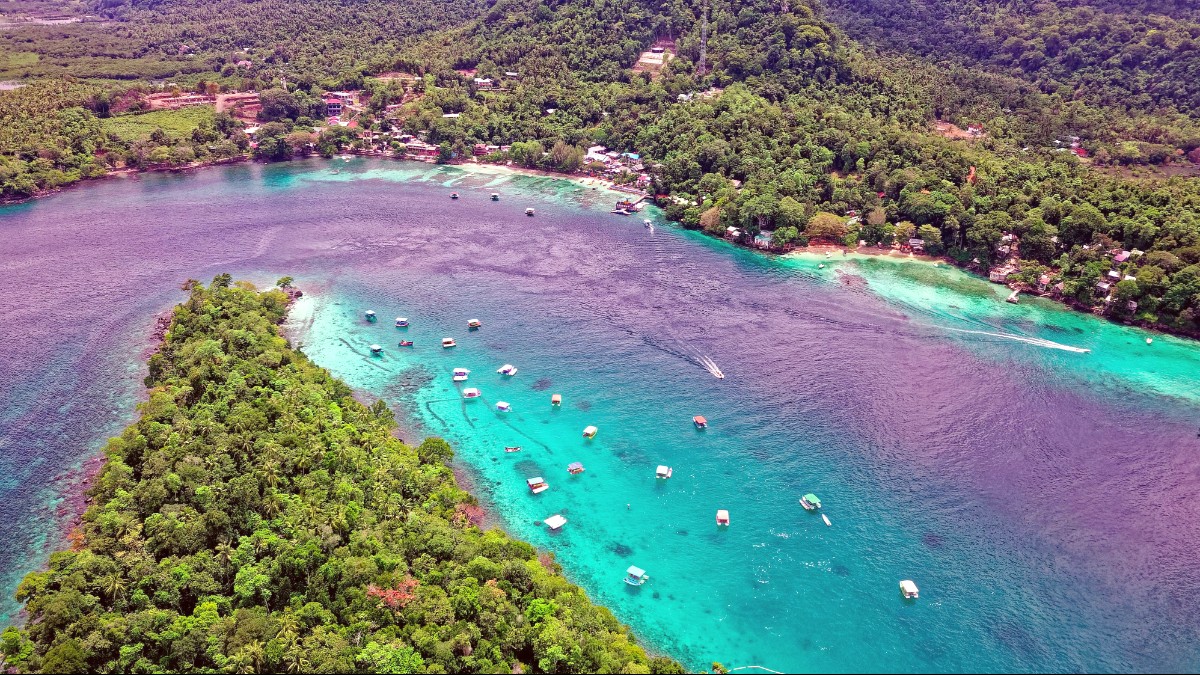
Vanuatu
This luxury liner, converted into a troopship, tragically sank during World War II. It is one of the largest and most accessible wreck dives in the world. The Coolidge is renowned for its vast size, extending from a depth of about 20 meters (65 feet) down to over 70 meters (230 feet). Divers can explore intact cargo, including jeeps, cannons, and personal effects of the soldiers, along with significant coral growth that now covers parts of the wreck.
Access to the SS President Coolidge is exclusively through accredited dive operators in Luganville. You must hold an advanced dive certification (e.g., PADI Advanced Open Water or equivalent) or higher, depending on the planned depth of your dives. Operators present briefings and guides. Book your dives well in advance, especially during peak season, as dive slots fill quickly. Plan for multiple dives to appreciate the sheer vastness and many features of the wreck. The dives call for careful planning and specialized training.
Both blue holes are ideal for swimming and photo opportunities.
No prominent archaeological ruins from ancient civilizations exist on Espiritu Santo that are open for general tourist visits.
Luganville's main street, Boulevard Higginson, retains some colonial-era buildings and a bustling market area. A walk along this street presents a glimpse into the town's past and present.
Various Christian denominations have churches in Luganville and throughout the villages. These often serve as community hubs.
Small memorials related to World War II appear in Luganville and near dive sites like Million Dollar Point, commemorating the island's wartime role.
The entire coastline around Luganville and the areas inland served as a massive military base during WWII. Relics like abandoned roads, foundations, and remnants of airstrips exist throughout the landscape, presenting clues to the island's strategic past.
The natural splendor of Espiritu Santo creates many opportunities for exploration and appreciation.
Espiritu Santo does not hold formally designated national parks in the conventional sense. However, vast areas of untouched rainforest and pristine coastal ecosystems function as natural reserves.
Mount Tabwemasana: Vanuatu's highest peak presents breathtaking scenic views for those who undertake the challenging multi-day trek. The journey presents panoramic vistas of the island's interior and coastline.
The rainforests on the island hold various bird species, presenting opportunities for bird watching, especially on guided treks. The marine environment boasts rich biodiversity, making it ideal for snorkeling and diving. You can observe diverse coral reefs, a multitude of fish species, turtles, and occasional reef sharks.
The island's numerous blue holes represent an unique geological phenomenon. These are a defining natural feature of the island.
In addition to the famous Champagne Beach, other beautiful beaches include Lonnoc Beach and Port Olry Beach on the north-east coast. Bokissa Island, a small private island resort, presents pristine beaches, calm waters, and excellent snorkeling. Oyster Island, a small island resort, also presents stunning waters. The island's rivers feed the blue holes and present lush, green corridors through the landscape.
Vanuatu's highest peak, offering breathtaking scenic views for trekkers.
A small private island resort known for pristine beaches and excellent snorkeling.
Unique geological features with incredibly clear, refreshing blue waters for swimming.
While formal museums are scarce, the island itself acts as a living exhibition, notably for its WWII history.
Beyond the well-known attractions, Espiritu Santo holds several hidden gems for those willing to venture a little further.
These spots offer a more intimate and authentic encounter with the island's natural beauty and cultural heritage.
Discover thrilling challenges off the usual tourist path.
Immerse yourself in local life and traditions.
For intrepid explorers seeking truly wild experiences.
Useful tips for exploring hidden locations.
Reputable dive operators simplify access to world-class underwater sites.
Access to the SS President Coolidge is exclusively through accredited dive operators in Luganville.
You must hold an advanced dive certification (e.g., PADI Advanced Open Water or equivalent) or higher, depending on the planned depth of your dives.
Book your dives well in advance, especially during peak season, as dive slots fill quickly.
Directly contact dive operators in Luganville for specific dive packages and details.
Many accommodations can assist with arranging local tours or connecting you with guides.
Book accommodation on Booking.comFor treks like Millennium Cave or Mount Tabwemasana, secure local guides, often arranged through tour operators.
Planning makes for smoother excursions.
Respectful interaction enriches your visit.
For any guided tours or treks, always use a local guide. Their knowledge of the terrain, local customs, and safety protocols is invaluable.
This approach also directly benefits the local communities. Confirm all arrangements and fees beforehand.
The best time to visit often shapes your experience of the island's attractions.
Ideal for outdoor adventures and clear waters.
Lush landscapes and fewer crowds.
Visibility is typically better during the dry season.
Early booking for dive slots remains useful, especially for the Coolidge.
The blue holes are stunning regardless of season.
Trekking conditions vary seasonally.
The wet season presents lush scenery, but more challenging trail conditions.
Tailor your visit to attractions that align with your main interests, whether that is diving, cultural immersion, or relaxation.
Some attractions, like the Millennium Cave trek or Coolidge dives, take a full day or multiple days. Account for travel time between sites.
Weather conditions or local events can impact plans, especially for outdoor activities. Maintaining flexibility for your itinerary is a good idea.